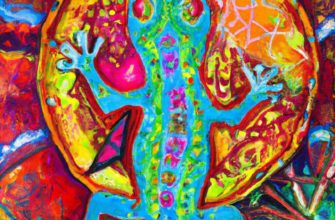To gain a comprehensive understanding of water symbolism, dive into the realm of its introduction. Explore the depths of this concept and unlock its meanings and interpretations. Discover the underlying significance of water symbolism and the diverse forms it takes. Uncover the enigmatic connections between water and its symbolic representation.
Definition of Water Symbolism

Water symbolism is a metaphor or symbol used in many forms of human expression. It’s linked to purity, renewal, and life cycles. Water is often associated with emotions, spirituality, and transformation, representing tranquility and turmoil.
Throughout history, water has been used symbolically. Ancient mythology sees it as the source of life, with immense power – it brings creation and renewal.
In literature, water can symbolize time, a journey, purification, or rebirth – rivers, lakes, and oceans act as metaphors. In art, water can evoke different feelings – still lakes represent peace, while ocean waves can mean chaos.
In spiritual practices, water is featured in rituals such as baptisms and cleansing ceremonies. It’s believed to have healing properties and is a medium for transformation.
To understand water symbolism, consider context and cultural background. This will help to appreciate its influence on perception and interpretation. So, dive in and explore the cultural significance of water symbolism!
History and Cultural Significance of Water Symbolism
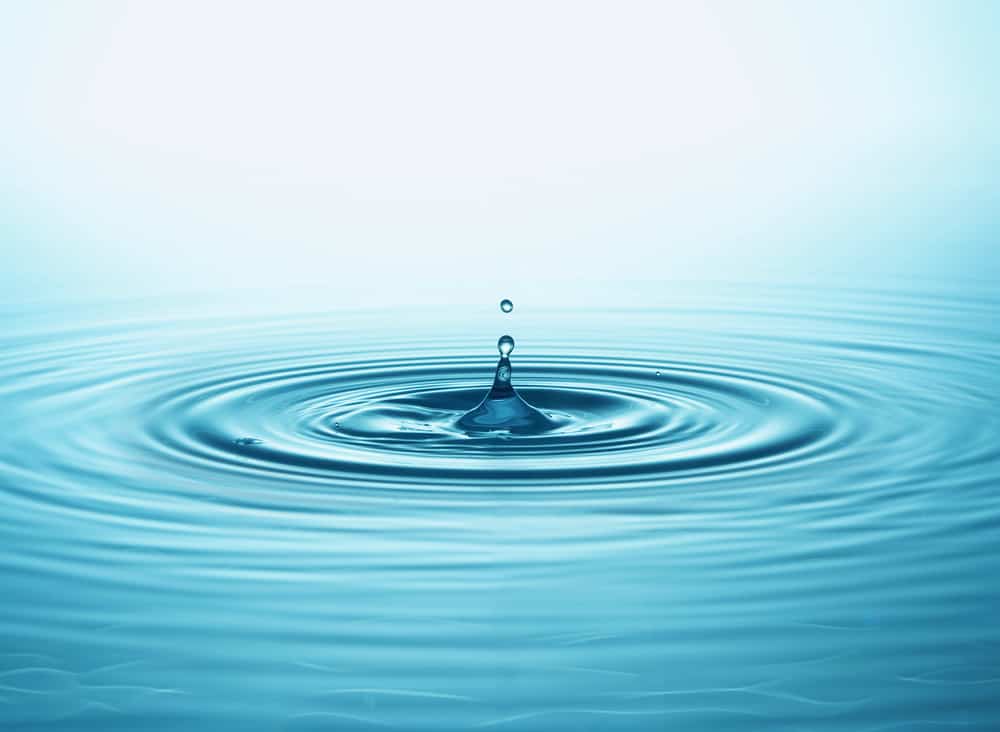
To understand the history and cultural significance of water symbolism, delve into the intriguing sub-sections: water symbolism in ancient civilizations, water symbolism in religious and spiritual traditions, and water symbolism in art and literature.
Water symbolism in ancient civilizations
Water has immense significance in ancient civilizations. It is seen as a symbol of purity, renewal and life. It is a vital source of sustenance to many cultures.
The ancient Egyptians linked water with the Nile River, seeing it as the lifeblood of their civilization. The flooding of the Nile was viewed as a divine blessing that brought fertility to the land and guaranteed a prosperous harvest.
In Mesopotamian culture, water symbolized abundance and fertility. This was often represented by mythical creatures like the Babylonian god Ea, who controlled both fresh and saltwater.
Mesoamerican civilizations, such as the Aztecs and Mayans, revered water for its role in creation. They built elaborate water systems to harness its power for agricultural purposes.
In ancient Chinese culture, water symbolized wisdom and adaptability. Its fluidity was seen as essential for personal growth and success. The concept of Yin and Yang also drew upon water symbolism to represent balance.
Water has a rich history of meaning in ancient civilizations, highlighting its universal importance. Understanding these cultural beliefs helps us appreciate the significance of water beyond its physical properties.
Water symbolism in religious and spiritual traditions
Water has great spiritual and cultural importance. It is thought of as a purifying, renewing force that brings cleansing, rebirth and transformation. Rituals and ceremonies around the world use water as a central element.
In Hinduism, ‘Abhishekam’ involves pouring water over sacred icons or deities. Christianity has baptism, which is immersing in water to symbolize purification and being ‘born again’. The Lakota Sioux people also have a Sun Dance ritual; participants cleanse their bodies and spirits by immersing in water. Water is seen as a way to communicate with the spirit world.
Water also symbolizes fertility and life-giving power: the Nile River was sacred in ancient Egypt, and its yearly flooding was seen as the source of bounty for crops. Ancient Greek beliefs saw Aphrodite, goddess of love and beauty, created from the foam of sea waves.
To understand water symbolism more deeply, research specific rituals and practices in different religions. This will show how water connects people to their spiritual beliefs. Water symbolism appears in art and literature too, where drowning in metaphors is a high dive into creativity.
Water symbolism in art and literature
Water is a symbol of life, purifying elements, change, and emotions. Across cultures and time periods, it has inspired creativity in art and literature.
In Japan, water is often depicted in “ukiyo-e” art prints. These showcase “the floating world,” reflecting transient pleasures, much like how a river flows.
In American literature, Ernest Hemingway’s novel “The Old Man and the Sea” uses water imagery to capture the themes of struggle, endurance, and cycles of life.
Water symbolism transcends cultural boundaries. It speaks to our shared experiences of life, purification, change, and introspection. Artists and writers use this power to create works that resonate deeply with audiences throughout history.
Interpretations of Water Symbolism
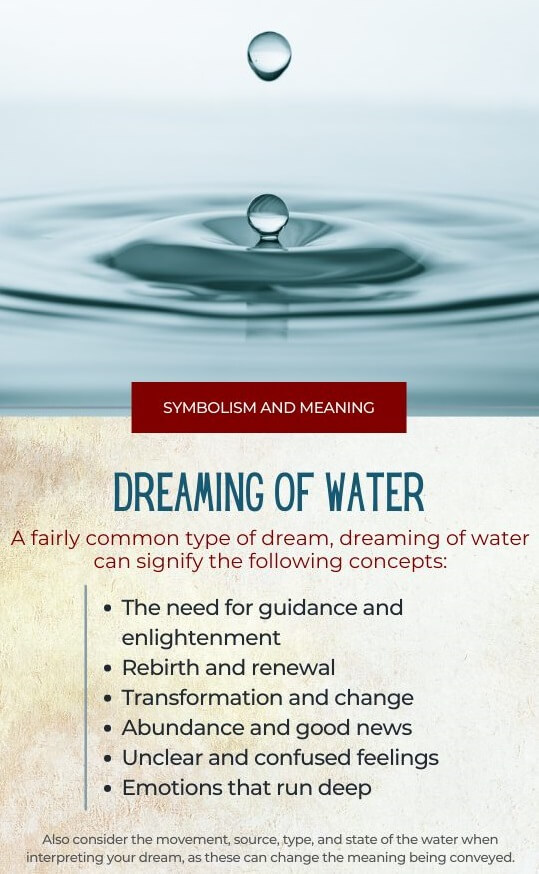
To understand the interpretations of water symbolism, delve into the symbolisms associated with water. Explore the symbolism of water as a source of life and regeneration, as a representation of change and transformation, and as a symbol of purity and cleansing. Each sub-section provides a unique perspective on the symbolism of water.
Symbolism of water as a source of life and regeneration
Water has always been linked to life and regeneration. It symbolizes existence, since it is essential for life and growth. It carries deeper spiritual and metaphysical meanings.
Let’s explore it more:
| Aspect | Symbolism |
| Nourishment | Water sustains and supports growth. It symbolizes the nurturing aspect of divine feminine energy. |
| Purification | Water cleanses physically and spiritually. It symbolizes renewal and a fresh start. |
| Transformation | Water can change from liquid to vapor or solid. This symbolizes adaptability and change. |
| Renewal | The cycle of water – evaporating, forming clouds, raining, and flowing back into rivers – symbolizes renewal and rebirth. It reminds us of the cyclical nature of life. |
Exploring these details helps us understand the symbolism of water better. Its complexities allow for varied interpretations across cultures and beliefs.
One example is a Native American legend. According to them, a great flood once destroyed everything. But a few creatures survived by going on top of a mountain. When the waters subsided, new life came from their tears. This shows the regenerative power of water and how it can give life even in the midst of destruction.
Water’s symbolism as a source of life and regeneration is seen in many cultures. Its nourishing properties, purifying abilities, and transformative nature remind us of the cycle of existence and the potential for renewal. Water symbolizes change and transformation, because every time you throw a stone in a pond, it’ll be different. Unless you’re in a time loop, then things get confusing.
Symbolism of water as a representation of change and transformation
Water holds a special place in many cultures. It symbolizes transformation and fluidity, reflecting the ever-changing nature of life. It can be used to purify and renew, and to wash away negative energy.
Water mirrors our emotions. Like the tides, they can ebb and flow. Immersing in water gives us solace and time for introspection.
Stories show us the power of water. One such story tells of a woman who felt trapped. She sailed the seas and discovered her own strength. Her encounter with water changed her life.
Though it cleanses, water can also be filled with filth. After a few minutes in a public pool, it feels more like a baptism in other people’s dirt.
Symbolism of water as a symbol of purity and cleansing
Water has always been linked to purity and cleansing. It is viewed as an emblem of change and renewal. Cultures and religions across the world have used water as a purifier. Hindus think of water as holy and use it for ritual cleansing. In Christianity, water is used in baptisms to symbolize the removal of sin.
On a spiritual level, water has the power to purify not only the body but also the soul. This idea appears in religious ceremonies and rituals, where people are immersed or sprinkled with water to wash away impurities.
Water’s role as a symbol of purity and cleansing is also related to its importance for sustaining life. Abundance of water means fertility and life. Ancient civilizations worshipped rivers as gods because they provided sustenance. Water’s flow stands for the cycle of life, death, and rebirth.
To add water symbolism in your life, try small rituals involving water. From taking a relaxing bath to sipping purified water – these acts can help you connect with water’s cleansing energy.
Water Symbolism in Different Cultures

To understand water symbolism in different cultures, delve into the richness of Eastern, Western, and indigenous perspectives. Explore the profound meanings attached to water in these distinct cultural contexts, and gain insight into the diverse interpretations and symbolic significance attributed to this powerful element.
Water symbolism in Eastern cultures
Water is immensely symbolic in Eastern cultures. It brings life, purity and renewal. Many traditions believe it possesses cleansing properties that purify the soul and wash away negative energy.
Let’s examine these fascinating aspects of water symbolism through a table:
| Culture | Symbolic Meaning of Water |
|---|---|
| Chinese | Wisdom, flexibility and adaptability. It is linked to life’s flow and natural change. |
| Japanese | Tranquility, peace and harmony. The concept of “suijo” links water and inner serenity. |
| Indian | Divine purification and spiritual growth. Rivers are sacred, the Ganges is holy. |
| Korean | Strength and resilience. Water represents motion and endurance despite challenges. |
Water also plays a key role in religious ceremonies. For example, the Japanese ritual of Misogi involves taking a sacred waterfall bath for body and mind.
In ancient China, water was one of five elements essential for balance in nature. It symbolized adaptability and was linked to Yin energy.
Explore Western water symbolism and why sometimes it’s okay to ‘drown your sorrows’.
Water symbolism in Western cultures
Western cultures view water as a source of cleansing and purification. Baptism is seen as a means of ‘washing away sins’ and starting afresh. Hot springs and spa treatments also point to its healing and rejuvenating power.
Water is a powerful metaphor for human emotions too. It can signify tranquility and peace, or turbulence and strength. Greek mythology has plenty of examples of this. The story of Narcissus shows us how captivation with one’s own reflection can lead to destruction.
Water symbolism in Western cultures highlights our connection to nature. It serves as a reminder that we are part of something bigger than ourselves, and our lives are linked to the ebb and flow of existence.
Let us embrace this ancient symbol and appreciate its spiritual and emotional depth. Through religious ceremonies and artistic expressions, may we honour this timeless element.
Water symbolism in indigenous cultures
Water is of great significance in multiple indigenous cultures around the globe. It symbolizes purity, life, and spirituality. In Native American tribes, water is thought of as a holy element that links humans to nature and the divine. It is said to have healing qualities and is utilized in purification rituals.
To further understand the symbolism of water in indigenous customs, let’s take a look at a table of its meaning in different traditions:
| Indigenous Culture | Water Symbolism |
|---|---|
| Maori (New Zealand) | Change, adaptability, and personal growth are represented by water. It symbolizes the unceasing flow of life and has spiritual cleansing properties. |
| Aboriginal (Australia) | Creation and birth are connected with water in Aboriginal cultures. It indicates renewal, fertility, and harmony with the land. |
| Inuit (Arctic regions) | For the Inuit people, water stands for strength and tranquility in a harsh environment. Patience, resilience, and adaptation to extreme conditions are symbolized by it. |
| Mayan (Central America) | Water is of great spiritual importance in Mayan culture. It is thought to connect realms of existence and stands for rebirth and regeneration. |
From this table, we can see that different indigenous cultures give water unique meanings beyond its physical properties.
Moreover, a fascinating story from the indigenous Emberá tribe of Panama further reveals their strong bond with water. They believe each body of water is guarded by a spirit guardian, known as “yamatama.” These guardians manage the rivers’ flow and ensure harmony between humans and water.
The symbolism of water is so powerful in literature and art, it’s like a giant wave of meaning washing over the reader.
Famous Examples of Water Symbolism in Literature and Art
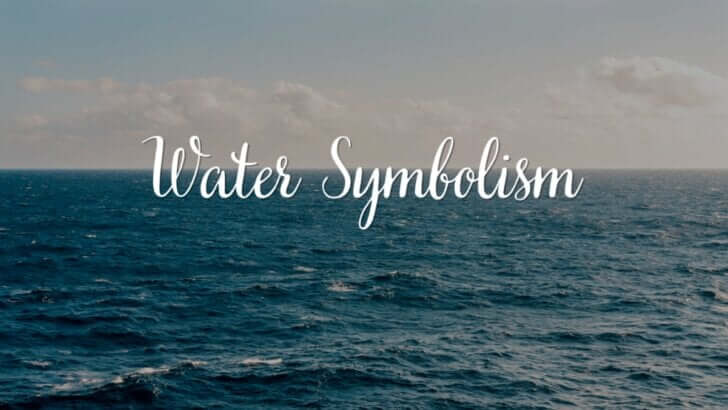
To explore the famous examples of water symbolism in literature and art, delve into the sub-sections: water symbolism in mythology and folklore, in novels and poems, and in paintings and sculptures. Each sub-section offers unique insights into the profound significance of water as a symbol across various creative mediums.
Water symbolism in mythology and folklore
Water appears in multiple tales from around the globe. In Hindu mythology, Vishnu floats on primordial waters before creating the universe. Ancient Greeks thought of rivers and springs as home to nymphs. Norse myths tell of giants guarding sacred wells. And in African folklore, rituals with water cleanse and protect. For Native Americans, it’s a source of spiritual renewal.
Water also stands for emotions – calm or turbulent. It can be powerful, like waterfalls. Or serene, like still ponds. This layered symbolism adds meaning to water in stories and folklore.
In ancient Egypt, the Nile was worshipped. The yearly floods blessed them with fertile soil – so they thanked Hapi, god of the Nile.
In literature, Moby Dick shows how hunting a giant whale can make one feel out of their depth.
Water symbolism in novels and poems
Authors often use bodies of water, such as rivers, oceans, and lakes, to create emotions in their stories. For example, in “The Rime of the Ancient Mariner” by Samuel Taylor Coleridge, water symbolizes both life and death. The mariner’s guilt is shown through droughts, and in the end, he finds redemption through appreciating all life.
In Charlotte Brontë’s “Jane Eyre,” Jane crosses a river to reach Thornfield Hall. This crossing is a metaphor for her transition into adulthood and independence.
Water has been a source of inspiration for art throughout history. Claude Monet painted tranquil scenes filled with lilies to represent serenity and harmony. His work reflects the beauty of nature and encourages introspection.
Cultures across the world have found great significance in water. For example, ancient Egyptians believed that crossing the Nile River was a journey into the afterlife. The river was essential for agriculture and sustaining life.
Water symbolism in paintings and sculptures
Artists have long been intrigued by water’s symbolic power in their paintings and sculptures. Its fluidity and depth lend themselves to interpretations of life, renewal, purity, and transformation. Water evokes emotions such as tranquility, introspection, and awe. Many artworks throughout history have used water symbolism to express deep meanings and stories.
Claude Monet’s famous series of water lilies is a notable example in painting. His impressionist masterpieces capture the ethereal beauty of these flowers floating on a pond. His use of vibrant colors and brushstrokes conveys a sense of serenity and harmony.
Salvador Dalí also utilized water symbolism. In his surrealistic painting “The Persistence of Memory,” melting clocks are shown near a body of water. This juxtaposition symbolizes the passage of time and human existence in relation to nature’s eternal flow.
In sculpture, Michelangelo’s “The Creation of Adam” is iconic. God is reaching out to touch Adam’s finger with an outstretched arm from a billowing cloud. The presence of flowing drapery emphasizes movement, suggesting a divine connection between humanity and water’s life-giving force.
Gustave Courbet’s “The Wave” showcases a massive wave crashing against rocky cliffs with tremendous force. It serves as a metaphor for the unpredictable power of nature and human emotions.
Water symbolism has been present across cultures and time periods. Ancient Chinese ink paintings often used water motifs to signify the flow of life energy. One example is “Along the River During the Qingming Festival,” a 12th-century scroll painting attributed to Zhang Zeduan. This artwork captures the ebb and flow of daily life in medieval China.
Water symbolism still flows through modern literature and art. It reminds us that, just like water, our emotions can both soothe and drown us.
Contemporary Relevance of Water Symbolism
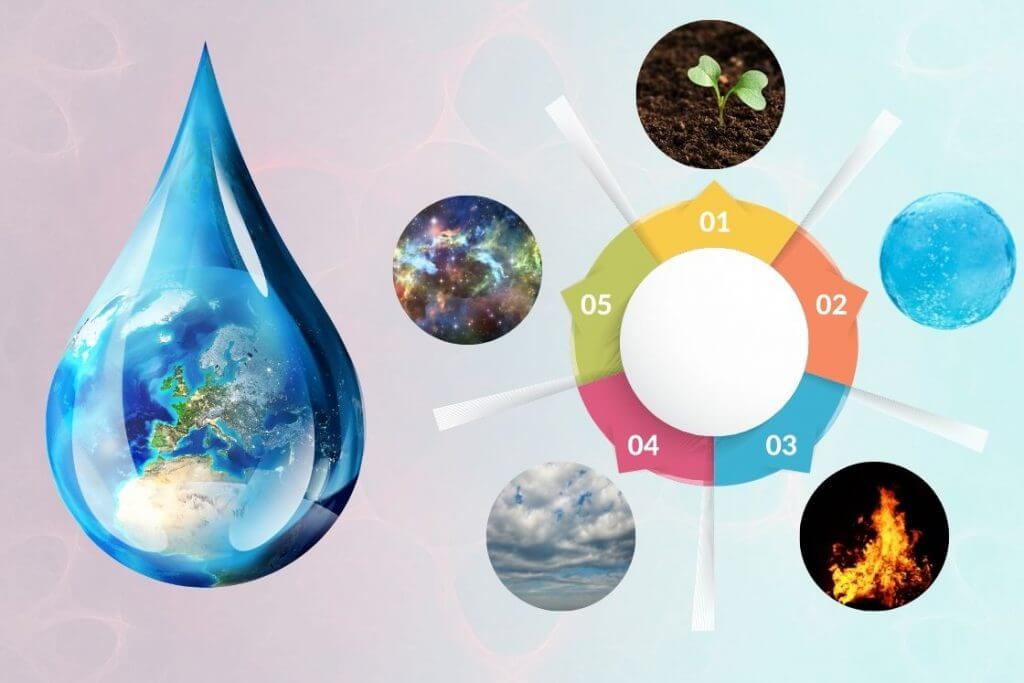
To understand the contemporary relevance of water symbolism, delve into its significance in various domains. Explore water symbolism in environmental and ecological movements, psychoanalysis and dream interpretation, as well as popular culture and media. Each sub-section offers unique insights into the diverse ways water symbolism is interpreted and embraced today.
Water symbolism in environmental and ecological movements
Water symbolizes many things – resilience, adaptability, and transformation. It also highlights the need for balance in nature, and is used to spread awareness about clean water initiatives and conservation efforts.
The blue ribbon is an iconic environmental symbol. It stands for a variety of causes like marine conservation and protection of freshwater habitats. This simple gesture is a great way to rally people for environmental action.
Indigenous cultures understood the spiritual significance of water long before modern environmental movements. Native American tribes held water ceremonies to recognize its role in sustaining life. This historical context adds meaning to today’s water symbolism in environmental activism.
Interpreting water symbolism is like trying to analyze a dream – just when you think you get it, it slips away like a wave.
Water symbolism in psychoanalysis and dream interpretation
Water symbolism is important in psychoanalysis and dream interpretation. It stands for different meanings, like purity, renewal, and transformation. In psychoanalytic terms, water represents the subconscious mind and the flow of emotions.
Dreams can show water in various forms, like lakes, rivers, or waves. These forms can symbolize different emotions and experiences. For example, calm water might point to emotional clarity and self-awareness. But, a turbulent storm at sea can suggest turmoil or uncertainty.
The depth and clarity of water in dreams can also be significant. Clear water might mean a clear understanding of emotions. Muddy water, however, can mean confusion or unresolved feelings.
Sarah’s case is a great example of water symbolism. She had dreams about being underwater and not being able to breathe. Through psychoanalysis, it was clear these dreams represented her fear of losing control over her life.
Water symbolism is still relevant today. It helps us understand our unconscious thoughts and desires. Exploring these symbols allows us to have greater clarity and self-awareness. Through popular culture and media, water symbolism is always around us, reminding us that virtual worlds and reality cannot escape its wet and wild depths.
Water symbolism in popular culture and media
Water symbolism is ingrained in popular culture and media, signifying various meanings and concepts. From its links to life and purification to representing tranquility and emotion, water is a powerful symbol transcending boundaries.
In movies and TV, water is often used to communicate emotions and create stories. Listen to the gentle sound of waves at a shore or the rushing of a waterfall. Rain stands for cleansing or rebirth, the ocean for mystery and unknown lands.
In music, water symbolism adds depth to lyrics. Artists use metaphors of water to express emotions. A river may mean serenity or growth, crashing waves overcoming obstacles or turbulent feelings. Water symbolism creates an emotional bond between artist and listener.
In literature, writers use water symbolism to explore themes and enhance narratives. Water is a metaphor for change, transformation, or transcendence. It stands for purity and healing when characters find comfort near water or go through changes in rivers or lakes. Also, water symbolism often supports characters’ introspection and personal growth.
Pay attention to recurring motifs like storms, flooding, or underwater scenes. These often have deeper symbolic meanings and can provide helpful insights into the themes creators explore across different mediums.
So, next time you watch a movie, listen to a song, or read a novel, take note of the presence of water symbolism. Dive deep and discover how this ancient symbol still resonates with audiences today.
Frequently Asked Questions
Q: What does water symbolize in different cultures?
A: Water symbolizes various meanings across different cultures. In some cultures, it represents purification, renewal, and rebirth. In others, it is associated with emotions, intuition, and the subconscious mind. Water can also symbolize fertility, life, and sustenance in certain cultural contexts.
Q: What does water symbolize in literature and art?
A: In literature and art, water often symbolizes change, transformation, and the flow of time. It can be used to convey the passage of life, the fluidity of emotions, or the journey of the soul. Water is also commonly associated with themes of reflection, cleansing, and rejuvenation in artistic expressions.
Q: What is the symbolic meaning of water in dreams?
A: Water in dreams typically represents the unconscious mind and the realm of emotions. The state of the water, such as calm or turbulent, may reflect the dreamer’s emotional state. Floating or being immersed in water can symbolize a sense of freedom or being overwhelmed. The meaning of water in dreams can vary depending on the context and personal experiences of the dreamer.
Q: What does water symbolize in religious practices?
A: Water holds significant symbolic value in religious practices worldwide. It plays a role in rituals related to purification and initiation. Water is often used in religious ceremonies to symbolize spiritual cleansing, renewal, and the washing away of sins. It can be seen as a source of life and a conduit of divine grace in many faith traditions.
Q: How does water symbolize emotional states?
A: Water is frequently used as a metaphor for emotional states. Calm waters are associated with tranquility, peace, and serenity. Turbulent or stormy water can symbolize turmoil, chaos, and emotional instability. The ebb and flow of tides may reflect the ups and downs of human emotions. Water symbolism allows for a visual representation of various emotional states and experiences.
Q: Does the symbolic meaning of water change based on its form (e.g., rain, ocean, river)?
A: Yes, the symbolic meaning of water can vary based on its form. Rain is often associated with cleansing, renewal, and fertility. The ocean represents vastness, mystery, and the unknown. A river symbolizes the flow of time, continuity, and life’s journey. Each form of water carries its own unique symbolic significance, influenced by cultural, geographical, and contextual factors.
Conclusion
To conclude the article on water symbolism, grasp the importance and adaptability of this powerful symbolic element. Recap the significance and versatility of water symbolism, and delve into final thoughts on its everlasting impact.
Recap of the significance and versatility of water symbolism
Water symbolism is a complex, significant subject in cultures and traditions worldwide. It conveys diverse concepts such as purity, life, cleansing, transformation and renewal. We find it in religious rituals, literature, art and everyday practices.
Exploring the significance of water symbolism reveals it has deep connections with human existence. In different cultures, water symbolizes life itself, highlighting its vital role in sustaining life on Earth. This connection appears in creation myths, depicting water as the source of all life.
Water symbolism also extends beyond physical properties to signify abstract concepts such as purification and renewal. In religious rituals like baptism or ablution, water cleanses and spiritually transforms. It represents a fresh start or rebirth.
Moreover, water symbolism is versatile in expressing emotions and the subconscious. Like waves, it conveys tranquility and serenity, but also turmoil and overwhelming emotions. This dual nature makes it an ideal metaphor for the ever-changing human emotions.
In addition, water has practical significance in daily life. It keeps us hydrated and nourishes crops via irrigation. Its impact on human survival reinforces its metaphorical power as a symbol of sustenance.
Exploring water symbolism reveals its universality across cultures and time periods. By recognizing the various interpretations placed upon this element by societies throughout history, we perceive the interconnectedness between humans and their natural environment.
Pro Tip: Analyzing water symbolism requires considering the cultural context and historical significance behind specific interpretations. This ensures a comprehensive understanding of the many meanings attached to this powerful symbol. Water symbolism has such staying power, it’s practically evolved gills and mastered the art of waterbending.
Final thoughts on the enduring power of water symbolism
Water captivates us, stirring our senses and emotions. It speaks to us beyond language and culture, speaking to our subconscious. Water teaches us to be flexible, strong and to change with life. It also signifies purification and renewal, clearing the way for the new.
It encourages us to persevere in the face of difficulties, to find an alternate route. Further, water stands for creativity and going within ourselves to explore our emotions. It invites us to use our creative abilities.
- Using water-elements in interior design can create a peaceful atmosphere, perfect for relaxation.
- Water-inspired images or motifs can evoke powerful feelings when used in art.
Moreover, literature can be enriched with water symbolism. It can add depth and complexity to characters or stories. In poetry, water imagery can empower metaphors and symbolize moods or transitions.








